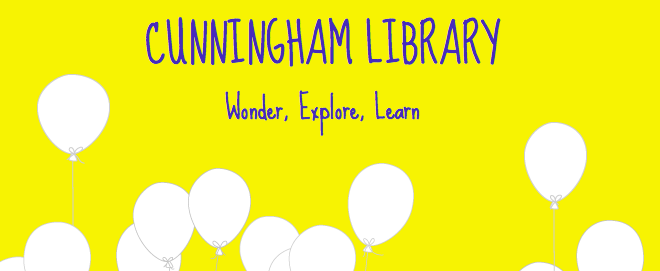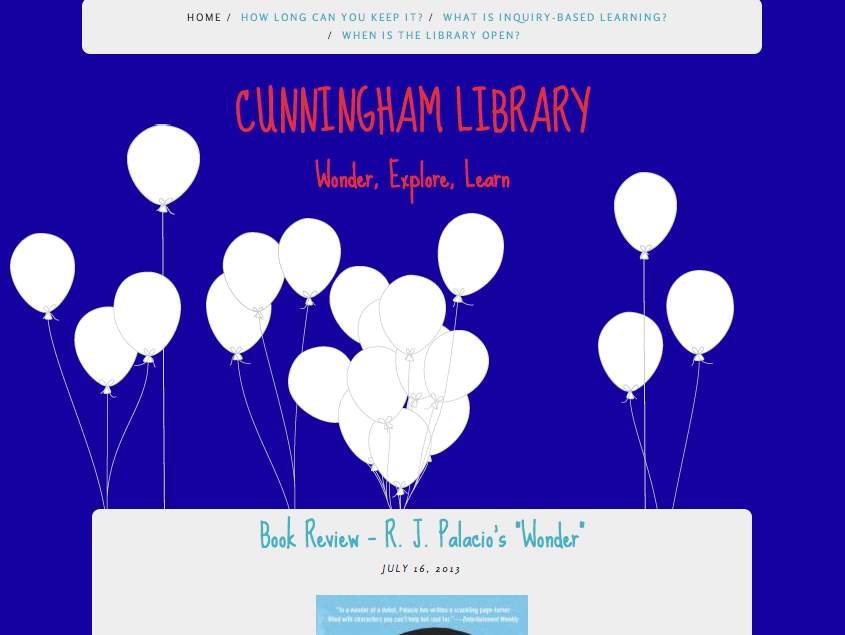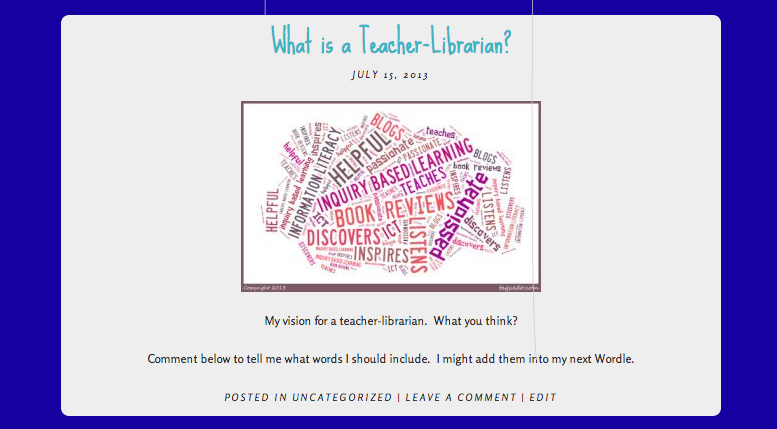
Where did this journey begin and where has it ended? I started with a vision of having a school blog. I think just the idea made me excited. From my experience in school, whenever you tell students that they are using technology that day, there will always be a greater level of excitement, even if it was just watching a video about almost anything. To me, having a blog, seemed the “cool” thing for a teacher-librarian would do. However, as I continued with my project, I realized a blog would just be another use of technology for the sake of technology if I didn’t have vision for its use.

Like many of the students in our class who has used this image from Tina Barseghian’s “Good Read: Technology is a Tool, Not a Learning Outcome”, I wanted to have the “right answers’.
RAISE AWARENESS
For and foremost, I wanted to raise awareness of what the library can offer the school. I decided to use this balloon theme for the blog because it gave a sense of joy and discovery. Furthermore, I wanted the blog to project a sense of familiarity as the image looks almost like something about of a picture book. With regards to linguistic cognitive domain, I wanted to associate something that may be unfamiliar (i.e., the blog) with something familiar (i.e., picture books) to them.
I know that many of the parents and students come in to use the library space before and after school. Other than looking at books, they might not have had the chance to explore aspects of the library that do not occupy physical space. Therefore, I decided to introduce the “24 Hour Library” tab on the top of my blog. In the page, I have included links to my district’s online resources, including databases and some useful links that the school community might want to use at home. I hope to introduce these online resources in other blog posts so that they have a greater understanding of how to use them. Furthermore, as they are introduced to students in the school, they will use it at home for their school work.
START CONVERSATIONS
A teacher-librarian’s livelihood at a school is largely dependant on how well he or she serves his or her patrons. Using his or her professionally judgement, a teacher-librarian should be able to deliver a library program that honours his or her vision. However, a library program is not viable if it is not serving the patrons. That is why I feel it is important to allow the patrons to voice their opinions about what they expect from a teacher-librarian and the library. I decided to create a Wordle type visual to sum up what I value in my job. Patrons can then add to that conversation to help me better develop as a teacher-librarian in the school. The same idea works with the “What is your favourite book?” conversation. Their answers will influence my book buying and hopefully, also start conversations between members of the school community about reading. It is these conversations that I hope will promote reading in our school.
FIND ANSWERS (TO THEIR QUESTIONS)
Inquiry-based learning is at the core of teacher-librarians. With the move towards personalized learning, we are not responsible for teaching students what to learn any more, but how to learn. Therefore, I wanted the creation of this blog, not only to be an inquiry project for me, but for the possible users as well. I want them to wonder how they could contribute to making the blog better. This will lead to the creation of a feedback form where they could submit comments about the blog. I created a tab on the top of the blog about inquiry-based learning where I have created a video explaining the concept. I have also created links to some useful search engines which can start conversations about what is the best search engines for students. It is their contributions that will make the blog better.
Reflection
I am excited about starting conversations with my school community using my blog. However, I am still feeling anxious about whether these dialogues will really start. Will I feel defeated and resort to old habits if the blog is not successful? What is success for me with regards to this blog? How realistic should my goals be? Will these goals evolve with time? I am sure, like every entrepreneur that first markets their product, their is a period of total uneasiness. What if the product doesn’t sell? What am I going to do?
Sometimes these thoughts weigh on my mind, especially since the future of teacher-librarians as a professional is at a crossroads right now. I feel like I have to work hard because what if my job no longer exists as an entity anymore. However, I am comforted by the thought that I would have hopefully tried my best. I do not know the origin of this quote, but it deftly explains my feelings about my future as a teacher-librarian.
Life is like a camera. Just focus on what’s important, capture the good times, develop from the negatives, and if things don’t turn out – take another shot.




Recent Comments